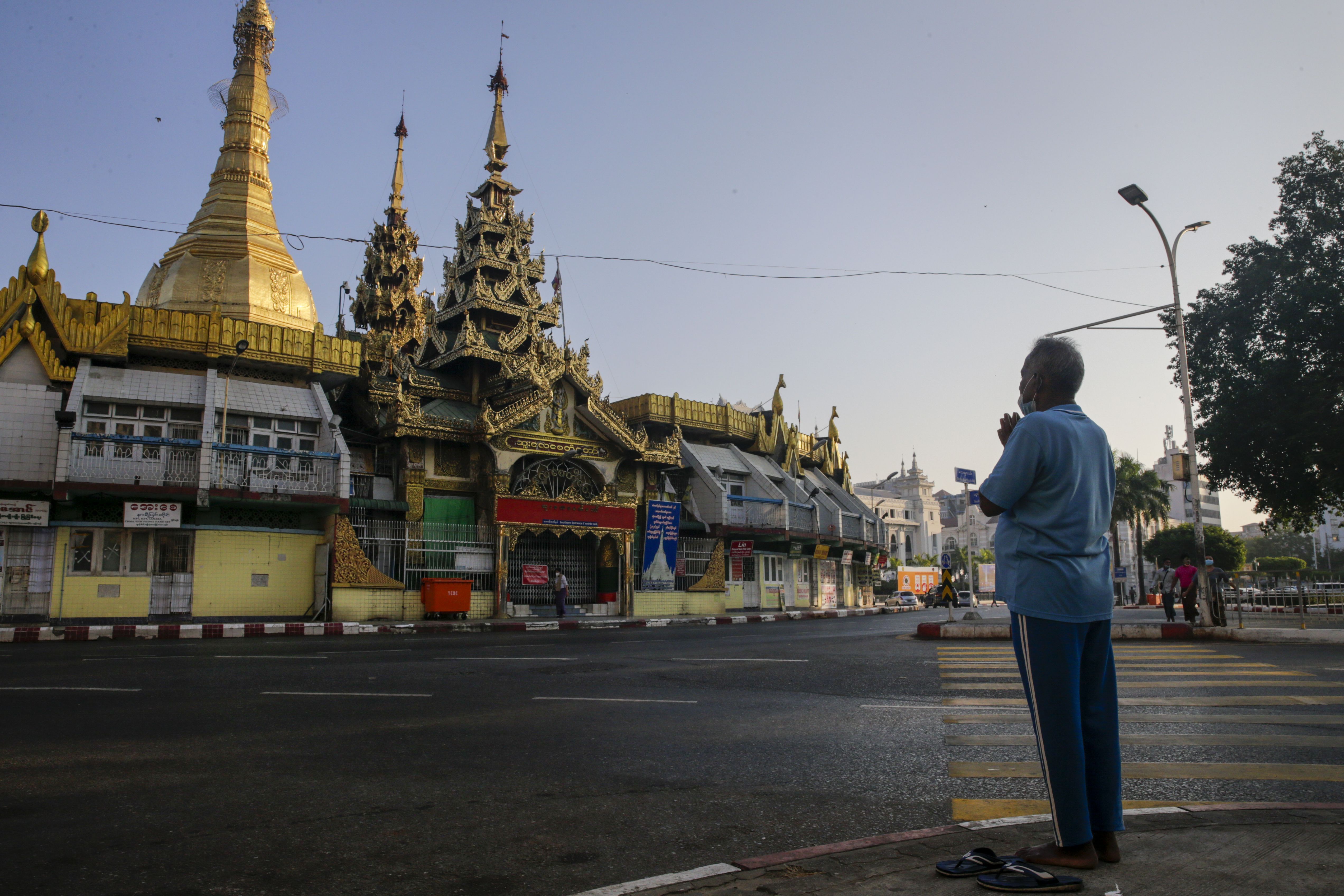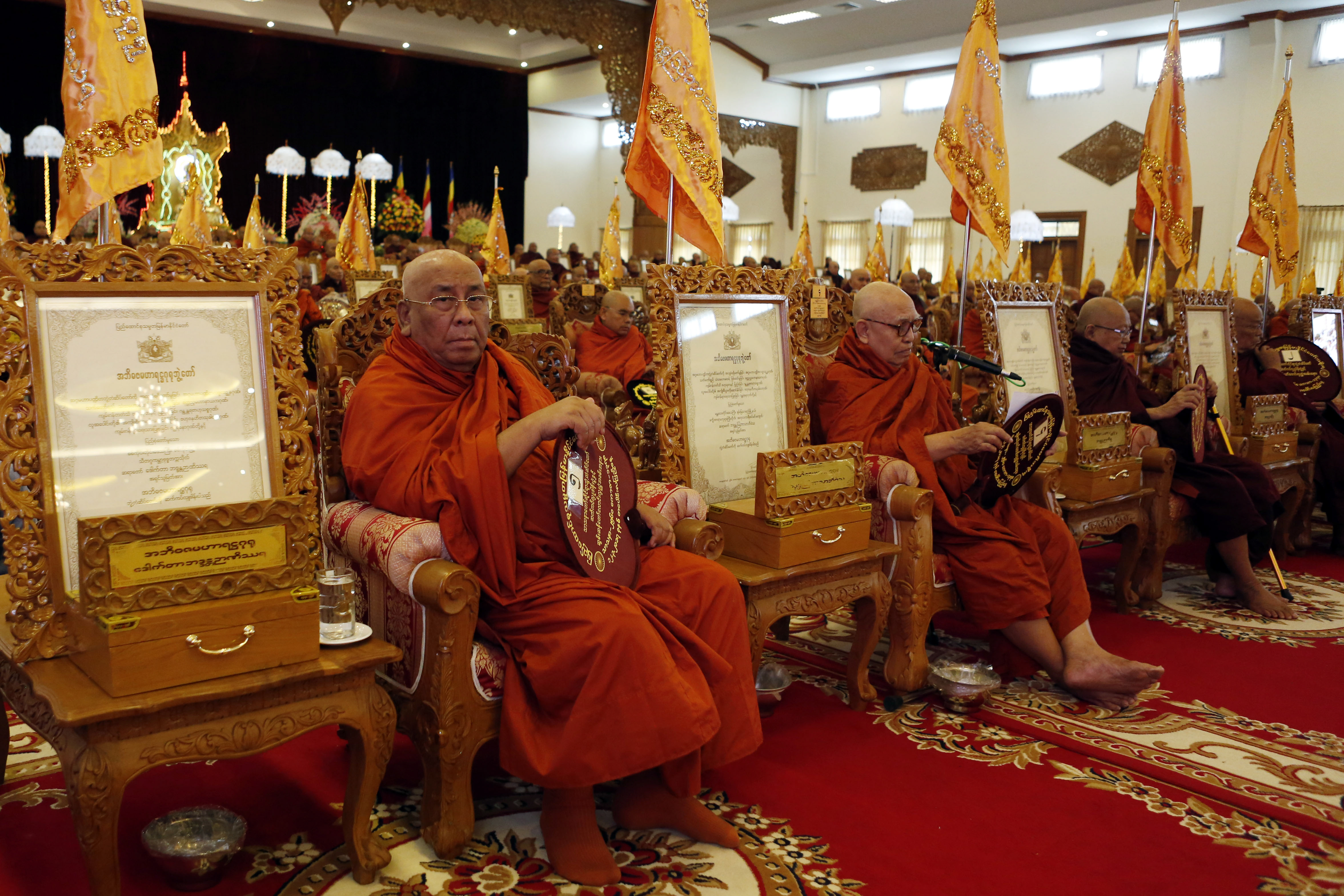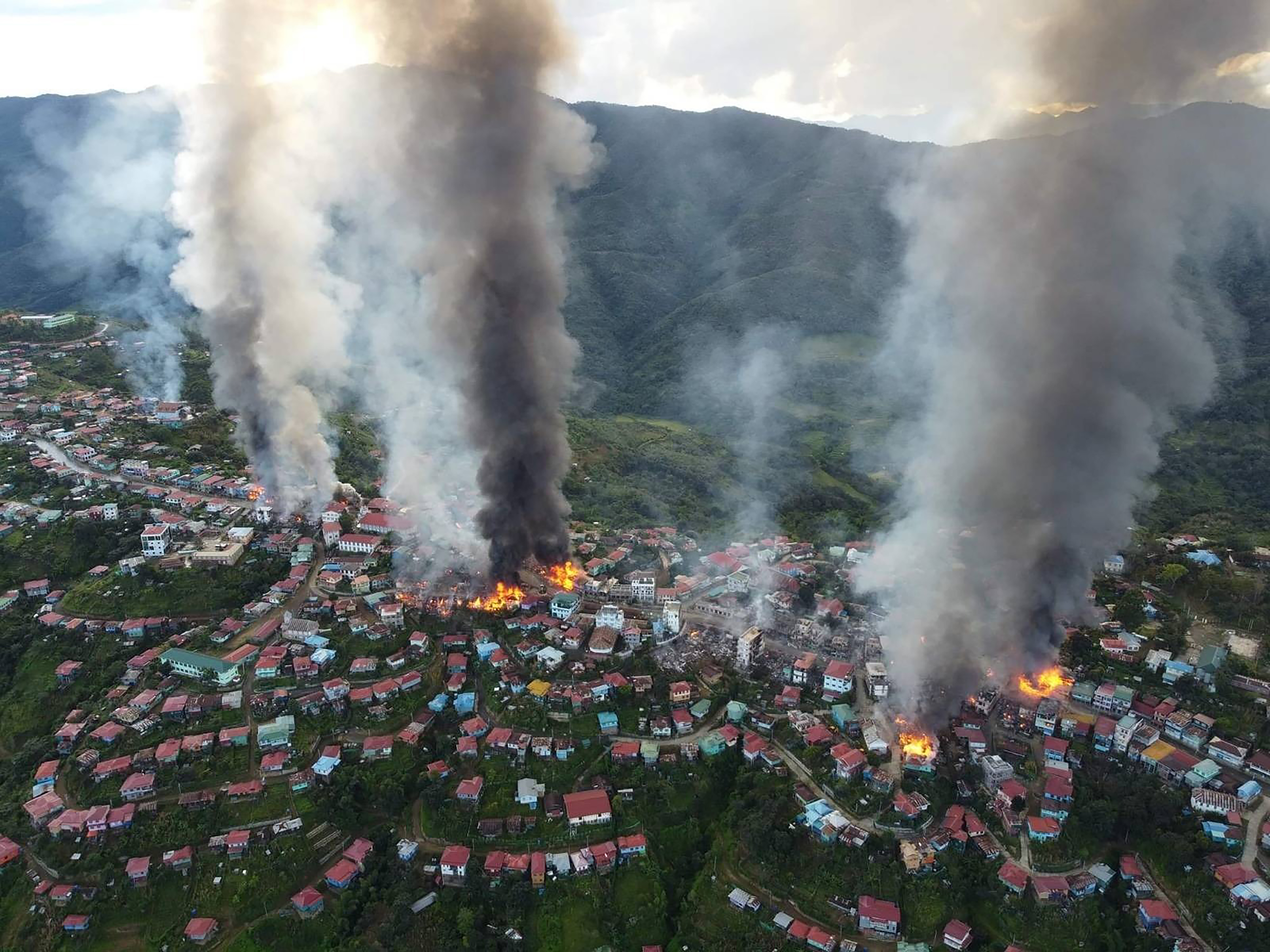
A plan is under way for Min Aung Hlaing, head of Myanmar’s military and leader of last year’s coup, to build the biggest sculpture of a sitting Buddha in the world – part of his attempt to forge a legacy as a protector of Buddhism.
But, in the last year, soldiers directly under his command have killed nearly 1,500 people in a crackdown on the military’s opponents that violates Buddhism’s first and most important principle: to abstain from killing.
”Their Buddhism is a fake show, they don’t deserve to be called Buddhists. We don’t kill other people. What they are doing right now is all opposite of Buddhism,” said Agga Wantha, a 30-year-old monk from Mandalay who has been leading protests against the coup.
“They are just saying that they are Buddhist but they are doing this just to get a hold of the country.”
Min Aung Hlaing has turned to methods used in the past to try and claim some kind of legitimacy in this 90-percent Buddhist country that has been under military control for most of the past 60 years.
That has meant alliances with high-profile monks and regular reminders of the high-ranking officers’ devotion to the Buddha, despite a continuing campaign of violence.
Obeisance, alms and scorched earth
In late October, the military initiated a scorched-earth campaign in Thantlang, in northwestern Chin State, destroying hundreds of buildings and forcing thousands to flee their homes.
Days later, Min Aung Hlaing visited several monasteries in Mandalay, Myanmar’s second-biggest city, making obeisance and giving alms. Among the monks he met was Bhamo Sayadaw, chairperson of the State Sangha Maha Nayaka Committee, a government-appointed body of high-level monks that oversees Buddhism and the clergy in Myanmar.

Military leadership visits to high-profile monks are published almost daily in the state-run media as part of the public relations effort. A report from the United States Institute of Peace last month showed that public displays of military support for Buddhism increased almost four-fold after the coup.
“The army has been very clever about using religion as their selling point. If you’re a monk in the society you have the absolute respect of the population. This is why the military wants to use them because it is a very effective tool for them to manipulate society,” said Sai Thet Naing Oo, Myanmar country representative at the Pyidaungsu Institute for Peace and Dialogue, which works to bring together different political voices in Myanmar.
“So even though there are many other things he could be doing, Min Aung Hlaing always takes time to visit the popular monks.”
‘Almost everybody hates them’
The military has faced considerable opposition since it deposed civilian leader Aung San Suu Kyi and her party, the National League for Democracy (NLD), in a coup it claimed was necessary because of fraud in the November 2020 elections.
A strong resistance movement emerged almost immediately, with demonstrations and a mass movement of civil disobedience leading to the development of a decentralised network of armed groups, known as the People’s Defence Force (PDF), that is now in regular conflict with military troops across the country.
The international community has also condemned the regime with the United States and the European Union imposing sanctions against several military leaders and military-owned businesses. At the United Nations, the country continues to be represented by the ambassador appointed by the NLD government.
With overwhelming resistance at home and a lack of support internationally, the military is desperate for any support it can get, according to Richard Horsey, Myanmar adviser at the International Crisis Group.
In early September, military authorities announced that they had released Ashin Wirathu, a monk known for his Buddhist nationalist views, especially his bigoted stance against Muslims.
Horsey says that while the military has maintained some distance from Wirathu and has not yet fully “thrown itself 100 percent behind the Buddhist nationalist agenda”, they want to keep the hardline factions on hand.
“They don’t have many friends. They’re looking to keep or gain whatever friends they can in a context where almost everybody hates them,” Horsey told Al Jazeera.
“Clearly Buddhist nationalism is one of the cards they can play, one of the constituents they can reach out to, and it’s certainly something they’ve been sending signals about, even though they haven’t fully followed through on that yet.”
The military’s efforts to use Buddhism and Buddhist nationalism as a legitimising tactic have also extended internationally.

When Min Aung Hlaing’s second-in-command, General Soe Win, visited Russia in September to oversee an arms deal, he was accompanied by Sitagu Sayadaw, another controversial monk known for holding hardline views. Horsey explains that part of this decision was probably a “credibility issue” and that travelling with a monk “shows that you have some sort of religious backing”.
Sitagu, who is a regime favourite, was one of the leading monastic voices during the 2017 “clearance operations” in which thousands of mostly Muslim Rohingya were killed and hundreds of thousands fled into neighbouring Bangladesh. Sitagu defended the military’s actions, saying that “non-Buddhists are not human so killing them is justified.” The Rohingya crackdown is now the subject of a genocide investigation.
While the military may not be embracing Buddhist nationalism in its entirety, it does seem to have resumed its old strategy of focusing its attacks on the parts of the country with large non-Buddhist populations.
“You see more of the armed conflict these days happening in majority non-Buddhist areas. They [the military] don’t say that they are attacking a group of people from a different religion, but you can see who they are targeting. They let their actions speak for them,” Sai Oo told Al Jazeera, referring to recent attacks in Chin, which is 85 percent Christian and Kayah, home to the country’s largest community of Roman Catholics.
Religious discrimination
The military has also used Buddhism in its attempts to tarnish the legitimacy of its opposition, launching smear campaigns against the rapidly growing resistance movement and its detained leaders.
Articles published in state-run media accuse PDF fighters of murdering monks, claiming that “terrorist groups intentionally kill the monks of Buddhism as the faith professed by the great majority of the citizens.”
Before the coup, the military also portrayed Aung San Suu Kyi and the NLD as “insufficiently supportive of Buddhism” to deter support from the clergy by sparking fear that the civilian government was overly liberal and secular, according to Horsey.
This line of attack has continued since the coup. In a speech in August, Min Aung Hlaing said that “Buddha devotees were disheartened in their faith in Buddhism during the previous five years”, referring to the period in which the NLD government was in office.
But this propaganda, while embraced by some within the monastic community, especially its more hardline members, presents a very different picture to the experience of religious minorities in Myanmar.
Salai Za Uk Ling, who serves as the deputy executive director of the Chin Human Rights Organization, a rights-based group representing the Christian-majority Chin population, says that even when Aung San Suu Kyi was in office, Buddhism was a dominating force in politics.
“Christianity is thought of as a foreign religion in [Myanmar] and Christians have been treated like second-class citizens. Under the civilian government we saw virtually nothing change in terms of policies – the policy manifested in a more subtle way, but there was no real, serious efforts to address the root causes of discrimination against religious minorities,” said Za Uk.
“And what we are seeing now under the current military junta is just the continuation of this long policy.”
However, despite the NLD’s similar stance on Buddhism, the military’s campaign against Aung San Suu Kyi and now the resistance movement does appear to have had some impact.

During previous periods of political unrest, monks were often at the forefront of the protests. In 2007, the “Saffron Revolution“, named for the colour of the monks’ robes, erupted in response to an increase in fuel prices and for more than a month thousands of monks flooded the streets all across the country.
But monk and protest leader Agga Wantha says that monks’ lack of visibility in the anti-coup movement is not because the clergy supports the military. Rather, he says, many monks have not been able to participate openly because of the COVID-19 pandemic, and the involvement of those who have is being overshadowed by the high-profile monks who have aligned themselves with the military.
“Since the military coup, Min Aung Hlaing has bribed and won favours for monks to be on his side but we do not want civilians to think that we are not supporting the [protest movement]. We, as monks, also do not agree with the military taking over the country,” said Agga Wantha.
Yet, as the military leans on religion and its alliances with the clergy to reinforce its grip on power, the military is turning on others within Myanmar’s Buddhist community who are making it increasingly clear that they will not support the exploitation of their religion by a regime that kills its own people.
“We are suffering from their ruling too. If we encounter them on the street, they shoot at us and, if we are unfortunate, we get arrested too,” said Agga Wantha. “This is not what we do as Buddhists so we will continue to protest.”







